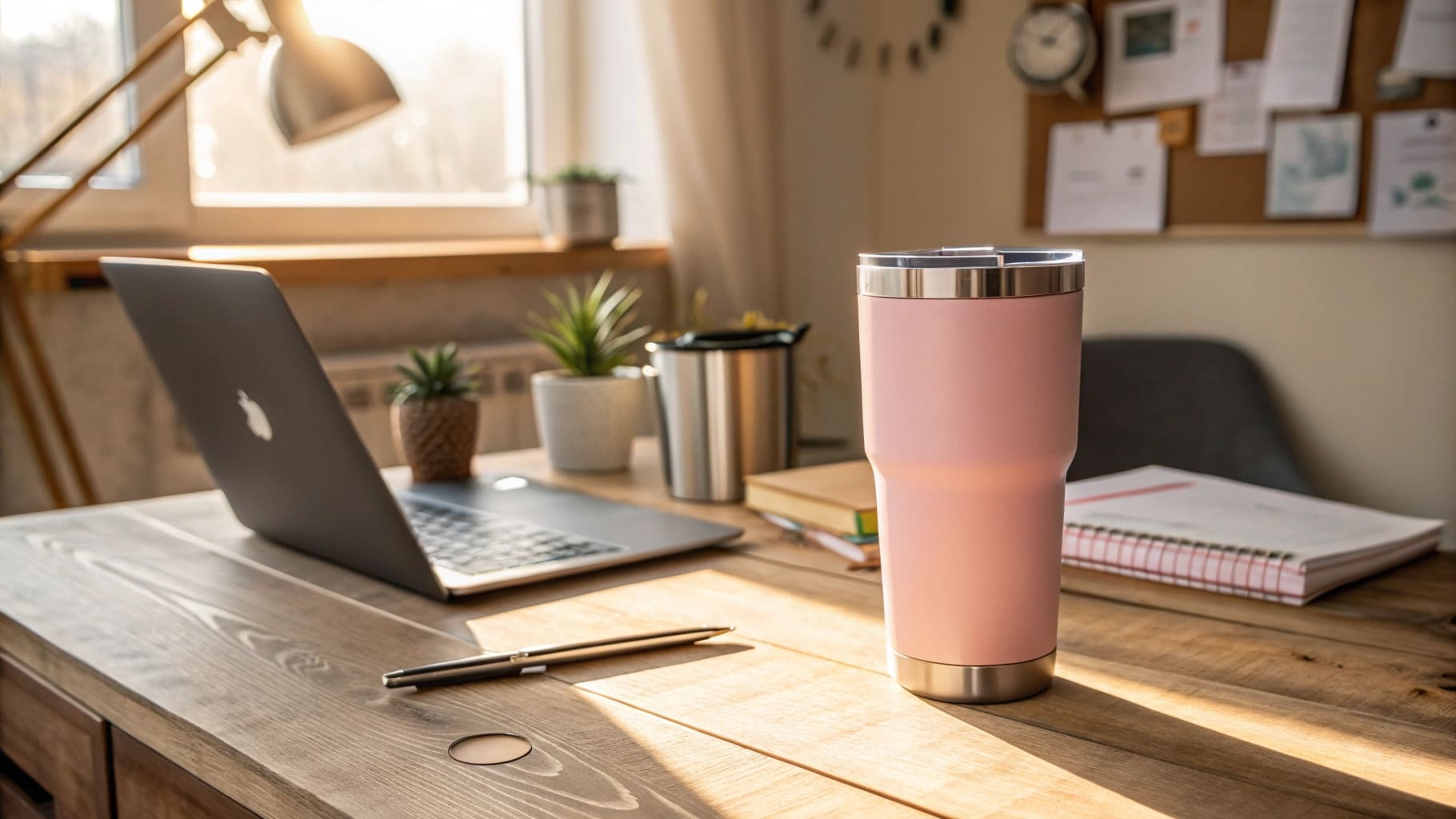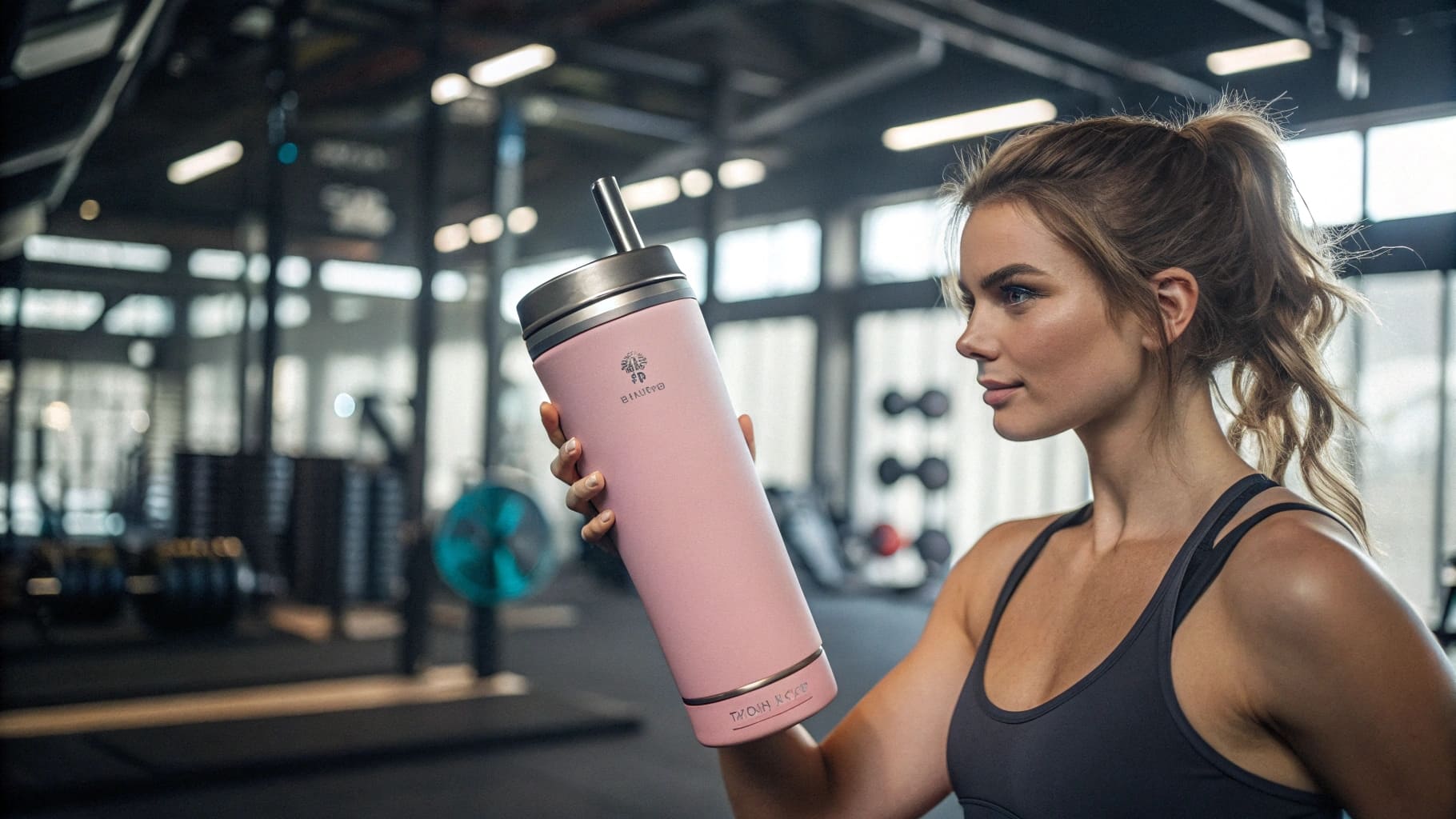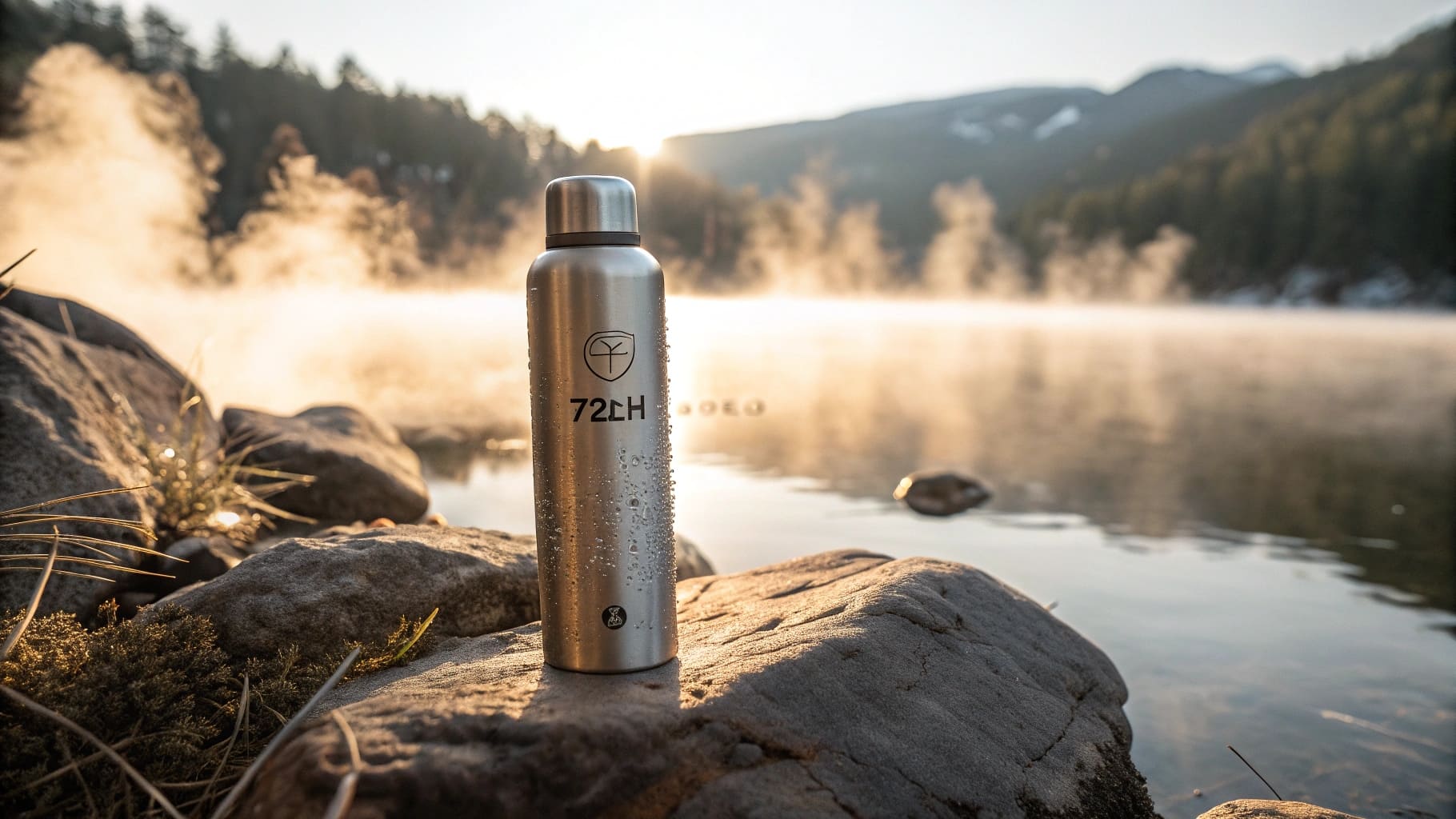Are you confused about stainless steel grades? Choosing the wrong type can lead to quality issues or safety concerns. This guide will help you make the right decision easily.
For products touching food or drinks, like water bottles, 304 stainless steel is usually the better, safer choice. 201 steel is cheaper but less resistant to rust and not ideal for food-grade items.

Choosing the right material for your products is really important. It affects quality, safety, and how happy your customers are. Let's dive deeper into stainless steel grades so you can choose confidently for your specific needs, especially when considering options like water bottles or coffee mugs we produce here at Icobottle.
Which is better 304 or 201 stainless steel?
Need the absolute best option for your stainless steel products? Using lower-quality steel might mean faster wear or even rust. Let's compare 304 and 201 directly.
For items like water bottles or food containers, 304 stainless steel is generally superior to 201. Its higher nickel content makes it much more resistant to corrosion and rust, which is crucial for safety and longevity.

Understanding the core differences helps explain why 304 is often preferred, especially in B2B markets where quality reflects on your brand. Stainless steels are grouped into series. 201 belongs to the 200 series, while 304 is part of the 300 series. The main difference lies in their chemical makeup. 304 stainless steel contains a significant amount of chromium (around 18%) and nickel (around 8%). This is why it's often called 18/8 stainless steel. Nickel is key for corrosion resistance.
201 stainless steel, however, replaces much of the nickel with manganese and nitrogen. This makes it cheaper to produce. But, the trade-off is reduced corrosion resistance, especially against certain substances. While 201 might look similar initially, it's more prone to rust over time, particularly if exposed to acidic liquids or harsh cleaning agents. For water bottles that hold various beverages, this difference is critical. Using 201 could lead to rust spots or a metallic taste transferring to the water, which is unacceptable for food-grade products.
Here's a quick comparison:
| Feature | 201 Stainless Steel | 304 Stainless Steel (18/8) | Recommendation for Food/Drinkware |
|---|---|---|---|
| Composition | Lower Nickel, Higher Manganese | Higher Nickel (≥8%) | 304 preferred |
| Corrosion Resist | Moderate | Excellent | 304 significantly better |
| Cost | Lower | Higher | 304 worth the investment |
| Food Grade Safety | Generally Not Recommended | Yes, Standard | Choose 304 |
| Durability | Good | Very Good | 304 lasts longer |
As a supplier, we at Icobottle strongly recommend 304 for any application involving food or beverages to ensure safety and customer satisfaction.
How do I choose the best stainless steel?
Feeling overwhelmed by stainless steel options? Making the wrong choice could be a costly mistake for your business. Here’s a straightforward way to select the best grade.
The best stainless steel depends entirely on how you'll use the product. For food-grade items like water bottles, 304 and sometimes 316 stainless steel are the top choices due to safety, durability, and rust resistance.

Choosing the right stainless steel isn't just about picking a number; it's about matching the material's properties to the product's end-use and the environment it will face. Think about these key factors:
- Application: What will the product be used for? If it's holding food or drinks, safety and corrosion resistance are top priorities. This immediately points towards food-grade options1 like 304 or 316. For purely structural or decorative purposes where food contact isn't an issue, other grades might be sufficient and more cost-effective.
- Corrosion Exposure: What substances will the steel contact? Water? Acidic juices? Salty solutions? Cleaning chemicals? 304 offers excellent resistance for general use, handling water, coffee, and mild acids well. If the product will face highly corrosive environments (like marine applications or constant exposure to harsh chemicals or very acidic contents), upgrading to 316 might be necessary. 316 contains molybdenum, which significantly boosts its resistance to chlorides and acids.
- Temperature: Will the product experience extreme heat or cold? Both 304 and 316 perform well across a wide range of temperatures typical for food and beverage containers.
- Budget: While cost is always a factor, especially for B2B wholesale buyers, weigh it against performance and safety. Using a cheaper, less suitable grade like 201 for a food container can lead to product failures, returns, and damage to your brand reputation. Investing in 304 often provides the best balance of cost, performance, and safety for items like the bottles and mugs we supply.
Here’s a simple guide based on application:
| Application Requirement | Key Consideration | Recommended Grade(s) | Why? |
|---|---|---|---|
| Drinking Water Bottles | Safety, Taste Neutral | 304 | Excellent corrosion resistance, food-safe |
| Coffee Mugs / Tumblers | Heat Retention, Safety | 304 | Durable, handles mild acidity of coffee |
| Food Storage Containers | Safety, Non-reactive | 304 | Prevents leaching, easy to clean |
| Highly Acidic Beverages | Enhanced Corrosion Res. | 316 (optional) | Better resistance to acids |
| Harsh Cleaning Environments | Chemical Resistance | 316 (optional) | More resistant to harsh chemicals |
| Non-Food Contact Use | Cost, Appearance | 201, 430 | Lower cost, adequate for some uses |
For most B2B buyers like Mark, focusing on high-quality, reliable products, 304 stainless steel is the standard and reliable choice for drinkware.
Why choose stainless steel 304?
Is 304 stainless steel really worth the slightly higher cost? Are you doubting if its benefits truly matter for your products? Let's highlight the key advantages clearly.
Choose 304 steel because it's the industry standard for quality food-grade products. Its 18/8 composition offers excellent rust resistance, durability, and safety, making it ideal for water bottles, mugs, and food containers.

304 stainless steel isn't just a random number; it represents a specific, reliable quality standard widely trusted across industries, especially for food and beverage products. Its popularity stems from a combination of beneficial properties that make it a superior choice compared to lower grades like 201.
The key lies in its composition, specifically the "18/8" ratio – roughly 18% chromium and 8% nickel.
- Chromium (Cr): This is the magic ingredient for corrosion resistance. Chromium reacts with oxygen in the air to form a thin, invisible, passive layer of chromium oxide on the steel's surface. This layer protects the iron underneath from rusting. Even if the surface gets scratched, the layer quickly reforms, providing continuous protection.
- Nickel (Ni): Nickel enhances this corrosion resistance, especially against certain acids. It also makes the steel more ductile (easier to form into shapes like bottles without cracking) and improves its performance at both high and low temperatures.
This combination leads to several practical benefits, especially important for B2B buyers focused on quality:
| Benefit | Explanation | Importance for Water Bottles/Mugs |
|---|---|---|
| Corrosion Resistance | Chromium oxide layer prevents rust and staining. Nickel boosts this. | Ensures product longevity, prevents metallic taste. |
| Food Grade Safety | Very low migration of metals into contents. Meets international safety standards. | Protects consumer health, meets regulations. |
| Durability | Strong, resistant to dents and scratches compared to plastics or aluminum. | Product lasts longer, withstands daily use. |
| Non-Reactivity | Doesn't react with acidic or alkaline beverages. | Preserves the original taste of the drink. |
| Ease of Cleaning | Smooth, non-porous surface resists bacteria buildup and is easy to sanitize. | Hygienic, convenient for the end-user. |
| Appearance | Maintains a clean, attractive finish over time. | Enhances perceived value and brand image. |
From my experience working with clients worldwide at Icobottle, opting for 304 stainless steel minimizes potential issues like customer complaints about rust or taste, ensuring the reliability buyers like Mark Shenng expect. It's the foundation for a quality product.
Conclusion
For water bottles and food-contact items, 304 stainless steel is the clear winner over 201. It offers superior safety, rust resistance, and durability, ensuring a high-quality product for your customers.
-
Discover the top food-grade stainless steel options to ensure safety and quality in your products, crucial for any business. ↩

